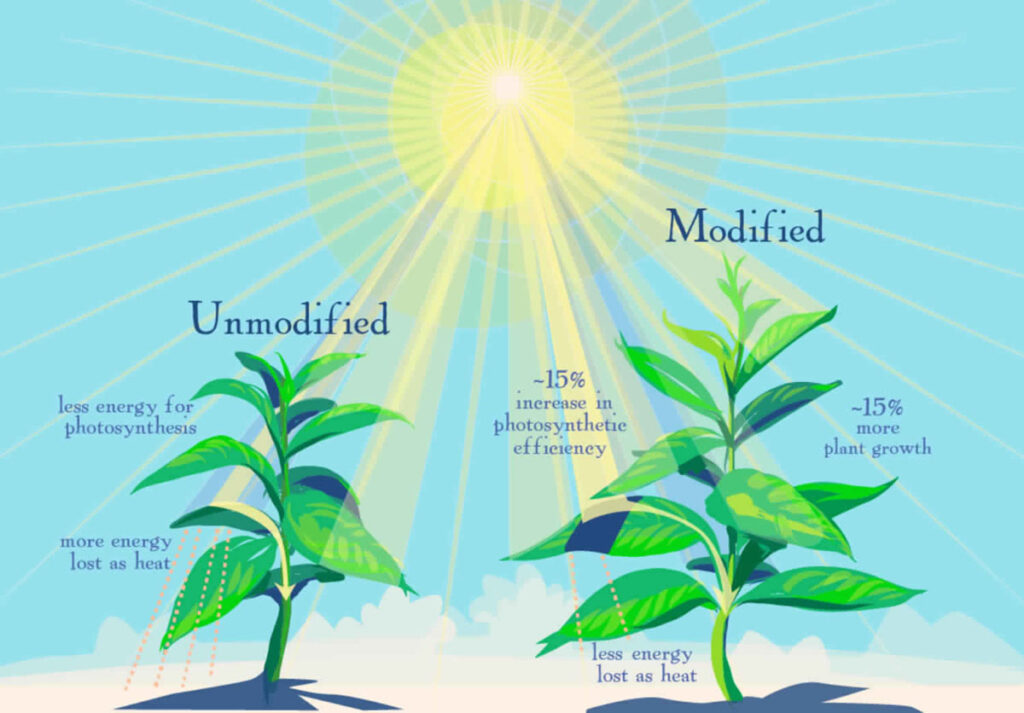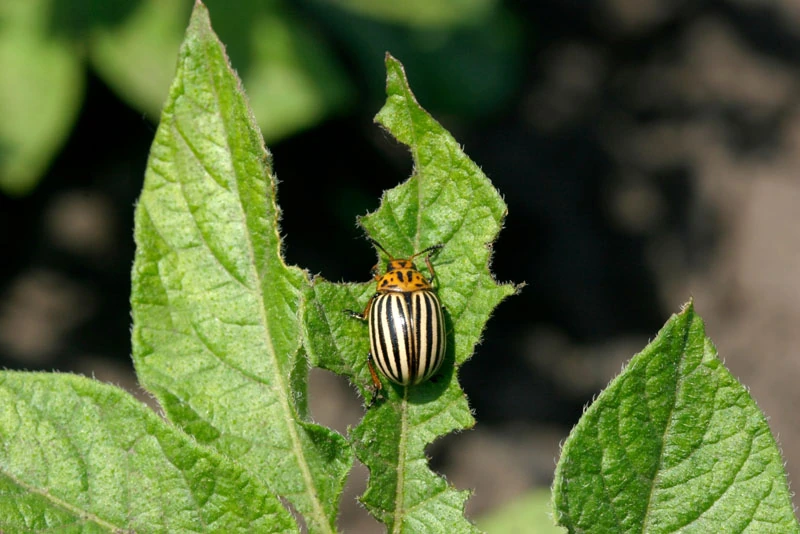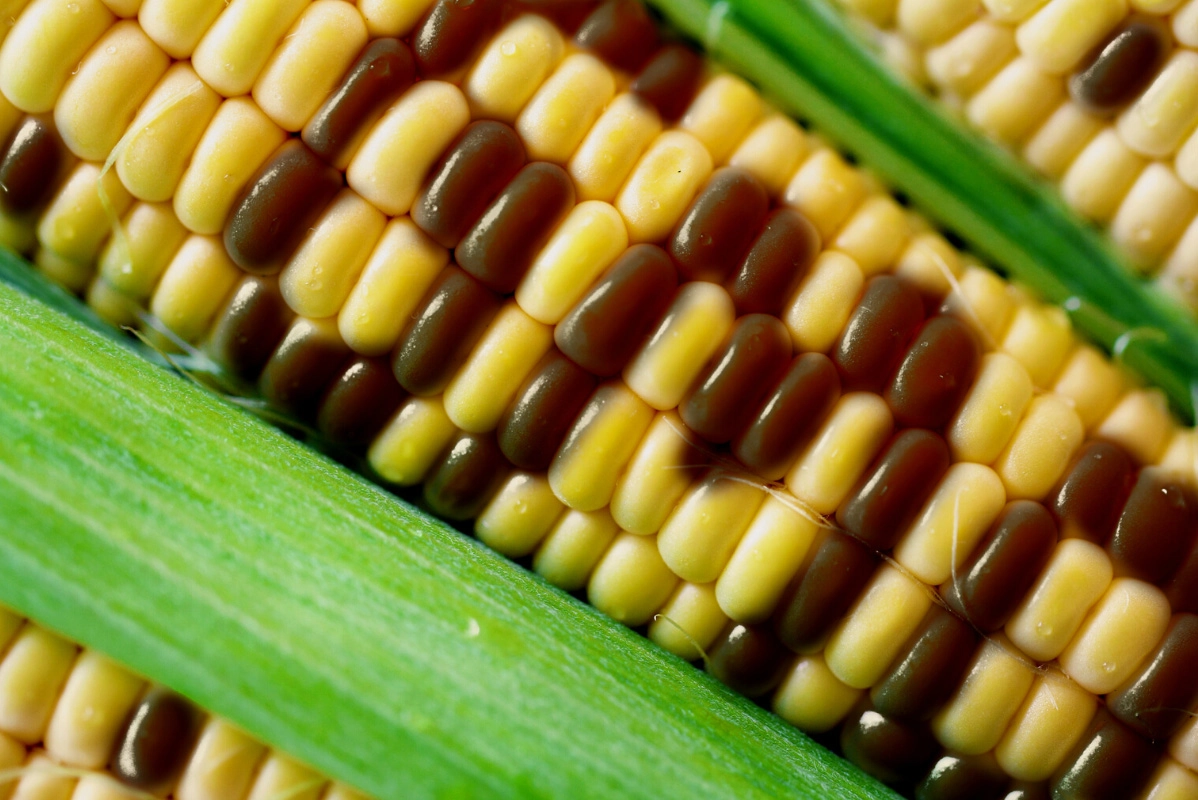GMOs spearheaded the biotechnology revolution and have had a massive impact on our environment and diet. In the US, we are at the stage where 94 percent of soy and the vast majority of corn, sugarbeet and even papaya grown on American soil are GM varieties.
It’s clear that GMOs have been rapidly adopted without the significant regulation seen in regions like the EU, but have they been a good thing? Many scientists, environmentalists, health professionals, and farmers propose otherwise.
In this article, we take a closer look at their concerns with the 14 disadvantages of GMOs for you to research and evaluate for yourself.
What exactly are GMOs?
In order to understand the disadvantages of GMOs, we first need to get clear on what they actually are. GMOs stands for Genetically Modified Organisms, living things that have had their genes deliberately altered using a variety of genetic engineering techniques that have existed since the late 1970s.
Genetic engineering developed from the discovery of DNA in the mid-20th century and the field of genetics that arose from it. Scientists gained the understanding that DNA encodes genes which are translated by cells to instruct the production of specific proteins.
The next step was to alter genes by changing DNA sequences to produce different protein products.

Source: Wikimedia / PrinceTC
With the technology and tools available to edit, exchange or delete genes, any organism can potentially have its genome altered by genetic engineering, ranging from viruses and bacteria to animals and human beings.
GMOs or transgenic organisms now have a range of applications, from medical treatments to food. Agricultural production of GMOs has accelerated over the past 20 years leading to a massive transformation of the US agricultural landscape that we see today.
GMO foods are a big part of the American diet and you may be consuming them without knowing.
Common GM foods and food ingredients include:
- Vegetable oil
- Canola oil
- Cottonseed oil
- Soy flour
- Tofu
- Tempeh
- Corn masa
- Corn meal
- Corn syrup
- High fructose corn syrup (HFCS)
There are few uniformly applied laws on labeling foods as GMO meaning that it is very easy to consume GMOs without knowing. Mandatory labeling has been proposed at state and federal levels but there has been little traction on compelling food producers to label GMO foods.
Why are GMOs often considered as harmful or dangerous?
Genetic engineering is a contentious issue because of the invasive nature of this technology that irreparably alters the gene profile of an organism. The insertion, modification, and deletion of genes is often heritable, producing new strains or breeds of organisms that are not naturally occurring.
GMOs are a completely new class of organisms that have been produced using methods that are divergent from thousands of years of plant and animal husbandry. The effects of making genetic changes to organisms are simply unknown, especially as genetics is still an evolving body of knowledge.
This makes it even more important to give the disadvantages of GMOs serious consideration at every level of society.
14 disadvantages of GMOs
In the US and other countries around the globe, the advance of GMOs has been met with relatively little resistance from producers and consumers. As you will see, discourse on the benefit and safety of GMOs is heavily shaped and censored by the biotechnology industries that produce GMOs, stifling a free and fair debate on their use. Here are 14 of the key disadvantages of GMOs to consider:
1. GMOs can produce toxic substances
The substances produced by GMOs or their altered metabolism may have toxic effects on human and animal organs and systems. In particular, the toxicity of GMOs that have insecticide, herbicide, or fungicidal effects or tolerance is of significant concern.
Animal and human studies have demonstrated toxicity and hormone disruption related to the pesticide substances expressed by some GMOs.

Source: Wikimedia / BASFPlantScience
An example is a variety of Simplot GMO potato that has a silenced melanin gene and produces raised levels of alpha-aminoadipate. Cooking converts the alpha-aminoadipate into toxic advanced glycoxidation end products (AGE), implicated in the development of diabetes and Alzheimer’s.
Though GMOs that are introduced for human and animal consumption have undergone toxicity studies, there are limitations to safety evaluations undertaken, which often fail to characterize the variability in toxin levels between GMOs of the same species and the long-term effects of bioaccumulation of substances they produce in the food chain.
2. GMOs have the potential to be allergenic
GMOs change the allergenic potential of foods. The gene editing, insertion, and deletion undertaken to produce GMOs can inadvertently lead to the production of proteinaceous allergens. Worse still, if GMOs produce novel proteins that are resistant to heat, stomach acid, and digestive enzymes, a persistent allergen could be introduced to the human diet.
Allergens can also be produced as an unintended consequence of genetic engineering. This may be due to where DNA sequences have been inserted into an organism’s genome or the influence of an inserted gene on the expression of other genes, leading to the over or under-expression of allergenic proteins.
In 1996 transgenic soybeans that contained a Brazil nut protein were found to be extremely allergenic and had to be removed from further development. The concern is not only the enhanced allergenicity of these transgenic foods but also whether the presence of their allergens can be appropriately identified, labeled or traced when they enter the food chain.
3. GMOs could fuel antibiotic resistance
Antibiotic-resistant genes are routinely inserted into GMO organisms to assess the uptake of a target gene. If the antibiotic resistance and target genes are inserted at the same time, scientists can use the presence of antibiotic resistance to see if the target gene has been taken up and also distinguish GMOs from non-GMOs.
The genetically engineered antibiotic resistance of GMOs can be transferred to the gut bacteria of animals or humans that eat them, leading to the rise of novel antibiotic-resistant bacteria. This risk is serious enough for regulatory authorities to consider it when licensing GMOs or approving field trials with them.
The persistence of these genes in the ecosystem is also an issue, with researchers at Washington State University discovering the persistence of antibiotic-resistant genes in treated wastewater sewage sludge. Another study found that people who ate GM soya already had genes from the soya present in their gut bacteria.
4. GMOs can affect immune system function
GMOs are capable of wide-ranging effects on the immune system, which have led to them being trialed as therapeutics for diseases that include cervical cancer and hepatitis B. But immune system priming by GMOs can also be disease-causing.
The novel proteins and protein combinations generated by GMOs can end up sensitizing the immune system to react abnormally to similar benign proteins, creating harmful interactions, allergies, or autoimmune diseases. Such cross-reactivity is well documented in GM foods like soy rice and tomato.

Source: Wikimedia / Делфина
GMO Bacillus thuringiensis (Bt)-producing corn is known to have immunotoxicological potential and has been shown in studies to sensitize mice and livestock to previously harmless foods. In humans, Indian cotton pickers have been affected by flu symptoms when handling Bt-producing cotton.
Studies that examine the effects of genetically engineered (GE) feed in pigs found that the animals suffered from a variety of immune system complications, including intestinal inflammation, in keeping with fears that GMOs cause systemic damage.
5. GMOs have been implicated in hormone disruption
GM foods have been identified as potential endocrine disruptors and implicated in reproductive defects in insects, fish, and animals, as well as subfertility in humans. This is because some of the proteins they produce act as hormone analogs or potentiate or dampen the effects of the existing hormones in an organism.
Investigators have found that the overexpression of certain gene products in GMOs can disrupt key enzymes that form part of the metabolic pathway of sex steroids. Many academics tentatively question whether these effects could be responsible for the precipitous decline in human male sperm counts over the last 50 years.
A shocking 2012 European study that examined long-term consumption of Roundup-tolerant GM corn (maize) in rats found that it was capable of causing derangement of their estrogen and testosterone levels. In addition, the rats grew large hormone-driven tumors in their liver, kidney, and mammary tissue.
6. Genetic modification can mask disease in GMOs
Another unexpected effect of genetic modification is that the altered genes may contribute to the masking of disease in the organism that is missed during processing. A notable example is potatoes that have had their melanin gene silenced.
In these potatoes, bruised tissues are not discolored. This means that they are not removed during food processing. Non-browning potato bruises contain elevated levels of the amino acid tyramine, which can cause hypertension, headaches and visual disturbances in people who cannot metabolize it.
Another masked toxic compound produced is chaconine-malonyl., a poisonous glycoalkaloid derivative that is produced by damaged or stressed potatoes.
GM non-browning potatoes were also able to conceal tuber infections, leading to the build-up of bacterial and fungal pathogens in tissues that included AAL-toxin, fumonisin, tentoxin, and verticillium toxin, which could affect exposed wild-type potato plants.
7. GMOs may contribute to cancer development
The suggestion that GMOs cause or contribute to the development of cancers is contentious. If you search for information on GMOs being or producing carcinogenic substances on the leading search engines, all the leading academic publications suggest that GMO foods do not have an elevated risk of cancer.
However, the development of cancer is multifactorial, and recognized harmful effects of GM foods, like chronic inflammation, hormone, and immune system changes, are acknowledged factors in the development of cancer.
In addition, many transgenic animals are being developed to express elevated levels of growth hormone, which is a key driver of cancer cell growth.
GM foods may also go through processing that concentrates harmful substances and makes them more easily absorbed by consumers. Consumption of a diet that has excessive quantities of processed foods is already known to contain traces of carcinogenic substances.
Transparent labeling of GM foods may be necessary to identify any ‘real-world’ effects in the community.
8. GMOs could cause loss of nutrition
Many GMOs, such as plants and animals, are developed for increased nutritional benefit. Proponents of genetic engineering insist that it is capable of solving world hunger and ensuring everyone has access to healthy, nutritionally balanced food.
However, many of the unwanted or unintended effects of GMOs may harm the ability of humans and animals to derive full nutrition from these altered foods. Genetically modified soy, corn, and rice contain proteins that can sensitize the gastrointestinal tract, leading to the development of novel allergies that cause inflammation and malabsorption of food.
GM food can also introduce genes that alter the sensitive gut flora that humans and animals rely on for optimal digestion and absorption of food.
GM foods are often presented as being more nutritious than non-GM foods because of their presence in processed and fortified foods like breakfast cereals. But if the supplemented vitamins and nutrients are removed, GM foods do not have demonstrably higher levels of nutrients.

Source: Wikimedia / Делфина
9. GMOs are effectively monopolized
The knowledge, technology, and seed varieties that have been developed from genetic engineering are, unfortunately, in the hands of a very small number of companies that produce and distribute them for profit.
The world’s leading corporations for GM seeds are:
- Monsanto
- Bayer
- DuPont/Pioneer
- Syngenta
- Agrosciences
- Dow
- BASF
In the US, Monsanto, DuPont, Syngenta, and Dow control over 80 percent of the domestic corn and soya market, and via numerous subsidiaries, control more than half of the world’s seed supply.
These companies are effectively all there is to the GMO seed market, limiting variety and choice for the farmers who depend on their seeds across the world. Their seeds are used for many staple crops, including corn, soy, alfalfa, canola, potatoes, apples, and sugar beet.
A big problem is the enforcement of copyrights on the genetically modified seed, which means that living organisms, that these companies could never create from scratch, are effectively co-opted as private property because of a minor modification they have made.

Fortunately, farmers across the world are starting to challenge these companies legally and are getting significant public support for their demands for seed sovereignty for mankind rather than a select few.
Seeds are public human heritage, and these companies have not done any of the millennia of plant husbandry that led to the development of the varieties they modified.
Though midwestern farmer Vernon Bowman lost his case against Monsanto, who insisted the small-scale farmer could not save GM seed from his crops to use over and over again, other farmers continued legal cases. This led Monsanto to drop enforcement of its soybean licenses prior to their expiry in 2014.
10. GMOs are driving a loss of biodiversity
The monopolization of GM seeds is dangerous because it is driving a precipitous fall in the biodiversity of crops. The aggressive enforcement of patents on GM seed has led to fewer and fewer non-GM seed varieties being planted, making GM soy, corn, and other crops the only option for many farmers.
This is because Monsanto and similar companies insist that farmers buy new seeds from them every year. Farmers are not allowed to save seeds from the previous harvest, a practice that has been done for centuries and helps to develop diverse, well-adapted crop varieties that are resistant to disease.
GM and non-GM must not be cross-bred, leading to vast GM monocultures.
The GM seed monopoly has dampened non-GM breeding and limited the number of non-GM varieties available. Farmers across the world report that GM seed companies compel seed distributors to push their products rather than valuable non-GM hybrids, enforcing their global monoculture to the detriment of the environment.
11. GMOs are contaminating wild-type varieties
In the USA, the high proportion of GMO crops being grown is leading to the contamination of non-GM fields. This is because pollinators will indiscriminately cross-pollinate non-GM crops with pollen they have picked up from GM plants.

Countering this problem is challenging because of the legislative advantages of biotechnology companies and the few GMO restrictions in place at a federal level. Local farmers are concerned that their organic and heirloom seed lines are contaminated with GMO varieties grown in neighboring fields.
In the State of Oregon, lawmakers are taking action to map where GMOs are being grown to protect non-GMO varieties. This is because GMs have harmed the state’s export market for non-GMO wheat. In 2014, two counties in Oregon voted to completely ban GMO crops, in spite of lobbying against this step by the biotech companies.
12. GMOs do economic damage to US food exports
Though the prevalence of GMOs and GM foods is high in the US, many countries across the world do not want to introduce GMOs into their ecosystems and diets. Such restrictions limit the export market for US crops because they are so heavily contaminated with GMOs.
US trade partners who restrict GMO imports cost the US millions of dollars in lost revenue. A 2020 study that examined this issue found that US corn and soybean export sectors have lost over $144 million in export revenues because they can meet non-GMO demand.
To counter these losses, stakeholders lobby for the global adoption of GMOs, through the dissemination of positive information about their benefits, But at a state level in the US, there is a grassroots push to limit the domestic expansion of GM crop cultivation.
13. GM crops can become vulnerable to pests, weeds, and diseases
GMOs that have been modified to include herbicide, pest, or fungal resistance may introduce selection pressure for non-GMO organisms in their environment. Herbicide resistance in crops and weeds can occur without genetic engineering, leading to the dominance of weed varieties that overwhelm crops.

This problem is not helped by the higher doses of pesticides used alongside GM crops. Repeated blanket use of pesticides causes pests and weeds that survive applications to give rise to resistant species.
The lack of genetic diversity means that GMO crops are particularly vulnerable to resistant pests, weeds, and diseases.
At least 64 different weed varieties are resistant to the herbicide atrazine, rendering certain herbicide-resistant GMOs useless. Farmers in certain parts of the US have been faced with the loss of over half their GM crops to resistant weeds.
14. Biotechnology companies restrict independent research into GMOs
The corporations that own patents on GMOs forbid independent research into the GMOs that they market and sell and will legally prevent such research from being undertaken or published. This is understandable as companies like Bayer and Monsanto want to ensure that any information that questions the performance of their seed does not reach the market.
In 2009, a group of scientists from corn-producing states went to the Environmental Protection Agency (EPA) to challenge the long-standing industry restrictions on impartial research into GMOs.
They expressed concern that these GMO conglomerates were inhibiting public scientists from investigating GMOs for “the public good”, warning that lobbying and undue industry influence had made it impossible to independently analyze transgenic crops.
Academics who research the adverse effects of GMOs may encounter difficulties in getting their work peer-reviewed or accepted by leading research publications. This is because many academics that sit on the editorial boards of publications have received funding from these large companies or allied interest groups.
In conclusion
Genetic engineering has always been presented as a solution that can benefit the whole of humanity, but the introduction of GMOs has demonstrated that this is a purely commercial endeavor, concentrating profits in the hands of a few.
These notable disadvantages of GMOs make it important to revisit the debate on their use. Their negative effects have the potential to be wide-ranging and persistent, but impartial research and positive engagement of the biotechnology industry could still shape a better future where GMOs can be used without damaging human and animal health or the environment.











